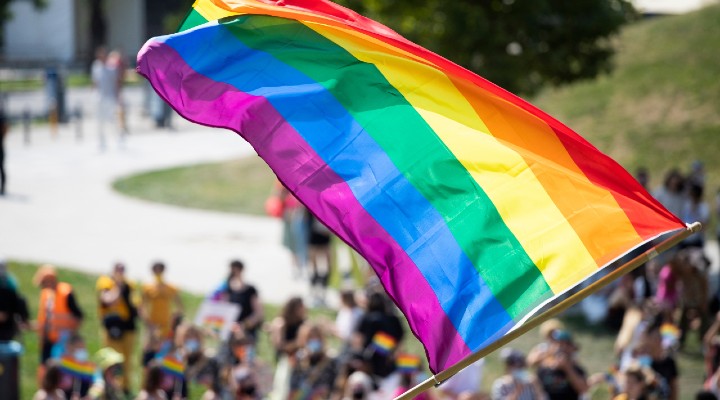With Sydney WorldPride 2023 on the horizon, retailers are seeking to play a meaningful and active role in supporting the LGBTQIA+ community, and demonstrating their commitment to – and championing of – diversity, inclusion and equality. Coles are a principal partner, while Vicinity Group has rebranded its retail centre in honour of the festival. The event is being hosted for the first time in the southern hemisphere, and coincides with the 50th anniversary of Australian Gay Pride Week, the 4
e 45th anniversary of Sydney Gay and Lesbian Mardi Gras and the fifth anniversary of marriage equality becoming law in Australia.
With the New South Wales Government expecting more that 78,000 domestic and international visitors according to the Australian Retailers Association (ARA), the festival also represents a commercial opportunity for retailers to attract and retain customers, who are looking to support brands that align with their values.
However, this comes with the risk of participating in rainbow washing (using rainbow colours or imagery to indicate support for the LGBTQIA+ community, without meaningfully backing it up with action) or pinkwashing, defined by charity group Minus 18 – a youth organisation dedicated to improving the lives of LGBTQIA+ youth – as a corporate trend to publicly support LGBTQIA+ initiatives with no direct support of the community.
As Dr Abas Mirzaei previously wrote for Inside Retail, short-term efforts by brands to capitalise on the economic opportunities provided by events like WorldPride – without meaningful action or engagement – can put the spotlight on these brands, and open them up for scrutiny in relation to whether their actions back up their words.
ARA’s CEO Paul Zahra stressed the importance of genuine inclusion of the LGBTQIA+ community within the retail sector. Beyond being the right thing to do, he explained that it is a growing consumer segment with high levels of discretionary income, and is important as a way of retailing great talent.
Forecasting that WorldPride would bring in about $100 million into the local community, the ARA added that the festival would continue the revitalisation of Sydney’s CBD. The subsequent flow-on effects would be felt right across the retail economy.
The ARA has released a position statement for the inclusion of LGBTQ+ people, which suggests a number of actions that retailers can implement to address and reduce inequalities and avoid engaging in pinkwashing.
These include (but aren’t limited to) ensuring that policies that reference gender and/or sexuality are explicitly inclusive of LGBTQ+ employees, establishing pathways for employees to become allies and investing in education and employee assistance programs for LGBTQ+ people and their support networks, preferably with unique service offerings for mental health.
Strategic relationships team lead at Minus18, Adrian Murdoch told Inside Retail that showing visibility, raising funds for community and driving meaningful change is an impactful way for brands to celebrate days like WorldPride.
He said that any activation – such as a pride range, or rainbow shopfront – that capitalises on the period to drive sales should also consider how those profits can go back to the LGBTQIA+ community, and help programs working to achieve equality.
Going deeper, Murdoch said that brands can use WorldPride to deepen their own internal policies, or advocate for issues that the community faces. This includes supporting the campaign to include questions about sexual orientation, gender diversity and variations of sex characteristics in the 2026 census, and ensuring that LGBTQIA+ young people can feel safe at school, home and work.
“Activating a pride moment shouldn’t be a one off,” Murdoch said.
“Consider LGBTQIA+ dates of significance like IDAHOBIT on 17 May, Wear it Purple Day in August or Trans Awareness Week in November, as opportunities to continue the conversation with your team and/or customers.”
Working transparently
Retailers should also work with the LGBTQIA+ community on its campaigns, activations, product design and creative endeavours.
Murdoch noted that lived experience from the LGBTQIA+ community would likely enrich the work done by these retailers and help to shine a spotlight on queer voices.
He also suggested that businesses consider how they consult with relevant organisations and charities. This can help retailers identify where there are gaps that they might be able to support – such as donating proceeds to initiatives targeting marginalised groups that are desperate for funding.
Murdoch added that brands that are transparent in the work they’re doing, both internally and externally, can help inspire others to do more. Transparency also helps to hold brands accountable to the LGBTQIA+ community and their customers.
He pointed to Bonds – which worked closely with Minus18 on its ungenderwear project, genderless shopping experience and other initiatives– as well as Levi’s, Converse and Ben & Jerry’s, as examples of brands that have a rich history of supporting the LGBTQIA+ community.
Regarding symbolic gestures, Murdoch believes that these are typically perceived to involve a fundraising element. As such, retailers not donating funds can create cynicism about, and accusations of pinkwashing, even if it is intended to create visibility.
“Consider what is in scope to financially support the LGBTQIA+ community, [and] explore different forms of internal education for your team to ensure the shopping experience is equally inclusive to the message driven by the range or campaign,” he said.
Meaningful action
For consumers who are wanting to keep retailers accountable – and ensure that they continue to engage with, and support the LGBTQIA+ community, after WorldPride concludes – Murdoch suggests checking in, and asking if their Pride range or campaign has a meaningful impact behind it.
“This might be confronting for brands to receive on their end, but their customers [asking] them [to take] meaningful action stems from an expectation that they think that brand shares those values,” he said.
“It’s a great opportunity to arise to that brand perception and reach out to LGBTQIA+ organisations, individuals or charities to deepen your work.”

